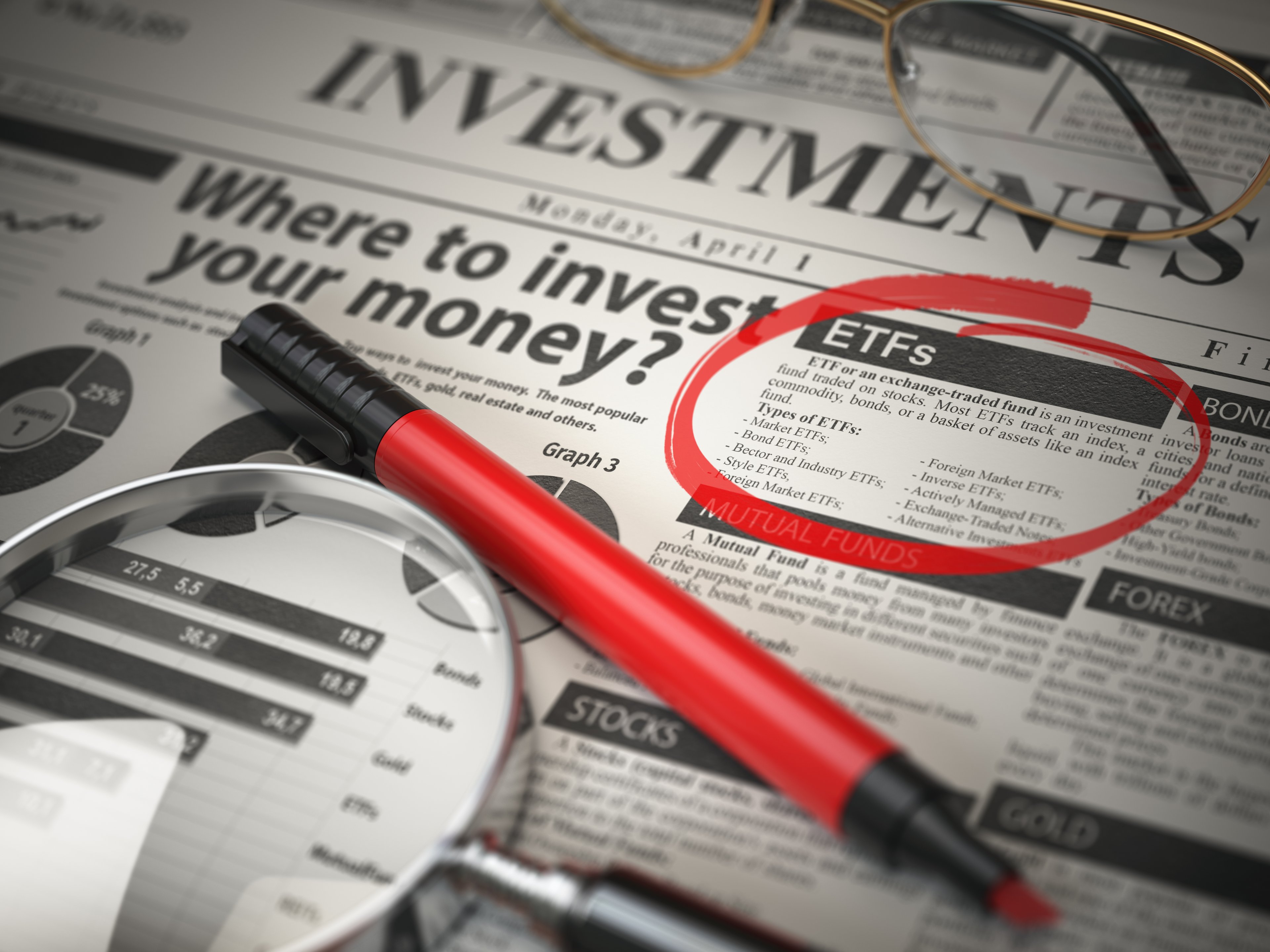There are a lot of ways investors can grow their wealth over time. While acquiring real estate, purchasing Treasury bonds, and buying commodities have all done the trick, no asset class has come particularly close to matching the average annual return of stocks.
But the price of admission to Wall Street's greatest wealth creator is volatility. Though no other asset class has matched the annualized return of the benchmark S&P 500 (^GSPC +0.70%), ageless Dow Jones Industrial Average (^DJI +1.58%), or growth-inspired Nasdaq Composite (^IXIC +0.64%) over multidecade periods, getting from point A to point B can oftentimes be a wild ride.
For example, between April 2 and July 10, the broad-based S&P 500 endured its fifth-biggest two-day percentage decline since 1950, its largest single-day point increase since its inception, and registered only its sixth gain of at least 25% spanning three months in 75 years.
For some investors, picking out individual stocks can be a daunting and/or stressful task. This is where exchange-traded funds (ETFs) can be especially helpful.

Image source: Getty Images.
An ETF is a basket of securities that allows investors to instantly diversify or concentrate their capital. With more than 3,000 publicly traded ETFs to choose from, investors can diversify their capital across hundreds or thousands of stocks with the click of a button, put their money to work in very specific industries or trends, or target value, growth, or dividend stocks.
While nothing is concretely guaranteed on Wall Street, one ETF has a flawless track record of delivering for its patient investors. If history were to repeat, amid a very select set of circumstances that I'll touch on in a moment, the Vanguard S&P 500 ETF (VOO +0.70%) has the ability to make you a millionaire.
The Vanguard S&P 500 ETF is a millionaire-making machine for patient investors
As its name implies, the Vanguard S&P 500 ETF attempts to mirror the performance of the benchmark S&P 500 index. It holds all 503 components in the S&P 500 (three companies have two classes of shares, which is why there are 503 components and not 500) and mirrors their weightings as closely as possible.
Over the trailing-20-year period, from Aug. 8, 2005, through Aug. 7, 2025, the S&P 500 has climbed from a closing value of 1,223.13 to 6,340 on the nose. Not factoring in dividends paid, this works out to an annualized return of 8.58%.
If history were to repeat and the S&P 500 were able to maintain an 8.58% annualized return rate over the coming 20 years, you'd be surprised at the relatively modest amount of money you'd have to commit to become a millionaire.
If you initially invested $100,000 into the Vanguard S&P 500 ETF and committed to add $800 at the end of each month for 20 years ($9,600 annually), an annualized return of 8.58% would leave you with more than $1,000,000 come August 2045:
| Year | Ending Balance | Year | Ending Balance |
|---|---|---|---|
| Year 1 | $118,551.91 | Year 11 | $418,525.74 |
| Year 2 | $138,695.57 | Year 12 | $464,407.16 |
| Year 3 | $160,567.56 | Year 13 | $514,225.20 |
| Year 4 | $184,316.17 | Year 14 | $568,317.63 |
| Year 5 | $210,102.41 | Year 15 | $627,051.19 |
| Year 6 | $238,101.10 | Year 16 | $690,824.09 |
| Year 7 | $268,502.09 | Year 17 | $760,068.71 |
| Year 8 | $301,511.48 | Year 18 | $835,254.52 |
| Year 9 | $337,353.07 | Year 19 | $916,891.26 |
| Year 10 | $376,269.87 | Year 20 | $1,005,532.44 |
Table by author. Returns compounded annually, not including dividends or net expense ratios.
A couple of things to note about the above table. ETFs have net expense ratios, which represent the management fees to operate a fund. Though the Vanguard S&P 500 ETF's expense ratio is minuscule, it's not zero and hasn't been factored into the above return data.
However, I've also not included dividends in the return calculation, which more than outweighs the net expense ratio and can potentially speed up the process to make you a millionaire. Based on an analysis from Crestmont Research, the S&P 500 is unwavering over multidecade periods, which is what makes the Vanguard S&P 500 ETF such a trusted moneymaker.
Crestmont examined the rolling 20-year total return, including dividends, of the S&P 500 dating back to the start of the 20th century. Even though the S&P wasn't officially incepted until 1923, researchers were able to track the performance of its components in other major stock indexes from 1900 to 1923. This resulted in 106 separate rolling 20-year periods of total return data (1900-1919, 1901-1920, 1902-1921, and so on, to 2005-2024).
What Crestmont Research discovered is that all 106 rolling 20-year periods produced a positive total return. Regardless of whether you invested at a temporary market top, during a recession or depression, or navigated your way through a war or pandemic, the S&P 500 would have been higher 20 years later, without fail.

Image source: Getty Images.
Why the Vanguard S&P 500 ETF and not another S&P 500 index fund?
Today, there are more than a dozen index funds that aim to track the performance of the benchmark S&P 500. You might be wondering why these other ETFs aren't a better choice to help you potentially become a millionaire.
For instance, the SPDR S&P 500 ETF Trust (SPY +0.71%) became the very first U.S.-traded ETF in 1993, with the Vanguard S&P 500 ETF not making its debut until September 2010. Based on first-mover advantage, the SPDR S&P 500 ETF Trust has been a popular choice by investors seeking instant diversification of America's greatest businesses.
But there's one notable difference between these two trusted ETFs: their net expense ratios.
The SPDR S&P 500 ETF Trust will gobble up 0.09% of invested assets to cover various management fees and expenses on an annual basis. For context, a research report from the Investment Company Institute pegged the average expense ratio for index equity ETFs at 0.15% in 2023.

NYSEMKT: VOO
Key Data Points
In comparison, the Vanguard S&P 500 ETF has a net expense ratio of just 0.03%, or a third of the SPDR S&P 500 ETF Trust.
A six-basis-point difference doesn't make a huge difference if you're dealing with a few thousand dollars or comparing total return data over the span of a couple of years. But if you're investing $1 million or more or holding your position for multiple decades, this six-basis-point gap can add up to thousands or tens of thousands of dollars.
Although history doesn't repeat to a T on Wall Street, it does have a tendency to rhyme. This suggests the Vanguard S&P 500 ETF will continue to create millionaires in the decades to come.








